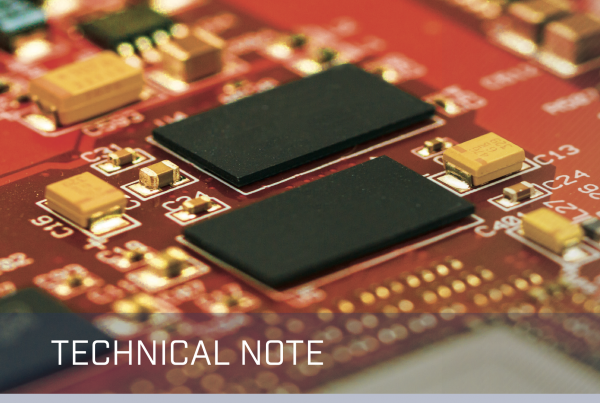How to virtually increase the number of digital outputs on a FLIR AX8 thermal camera
Application
A customer using an AX8 wanted to trigger on the digital output if either one of two temperature conditions were met. Each stage would be triggered by a different condition and would trigger a different digital input on the receiving device.
Problem
The AX8 only has a single digital output. This posed the question, could a single digital output be used to send multiple digital signals that could be differentiated by a system receiving them?
Solution
The solution to this problem was found by using the features on the AX8’s web-based interface. This allows a user to select regions of interest (ROI) on the image stream. Each ROI can be used to trigger the digital output based on user defined parameters. However, the receiving digital input still does not know which ROI has been triggered.
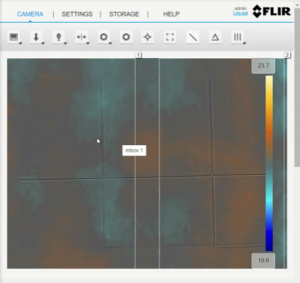
The crucial feature that can allow a system to differentiate between each ROI is the ability to change the pulse length of each ROI trigger. Figures 1 and 2 below show two pulses being captured by an oscilloscope.
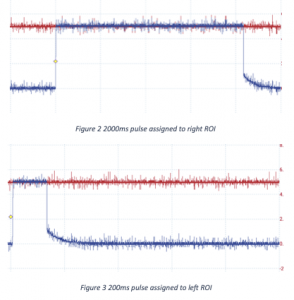
Now we can send a different signal depending on which ROI rigger condition has been met. We now just need a receiver that can tell the difference between the two. This can be implemented in software.
Using an Arduino board (and my primitive programming skills), I wrote a simple script that is activated when the digital output of the AX8 is detected. The code then waits to see if it was a short or long pulse. A short pulse would indicate region 1 and a long pulse would be indicate region 2.
In figures 4 and 5, the two regions of interest have been drawn and set to trigger over 27 degrees. The output of the script is programmed to indicate when either the left or right ROI has been triggered. My thumb provides the sufficient temperature increase to activate the digital ouput.
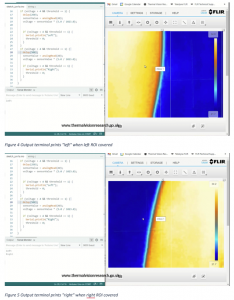
Conclusion
The example above is very simple but proves the limitation of one digital output can be overcome and leaves huge potential for refinement. With an inexpensive microcontroller, a single digital output
Click here to download the article
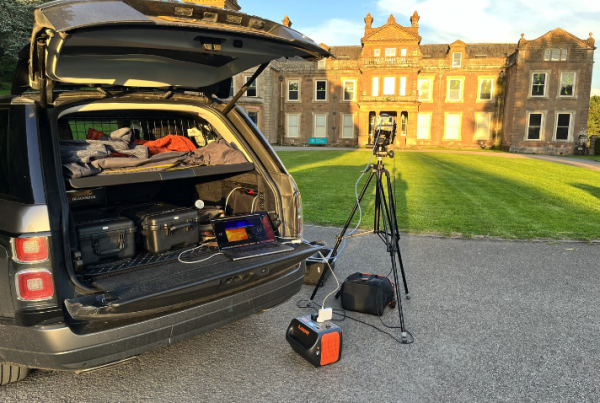 @ Evenings onsite filming bats I am raw html block.Click edit button to change this html Click here to download the article
@ Evenings onsite filming bats I am raw html block.Click edit button to change this html Click here to download the article
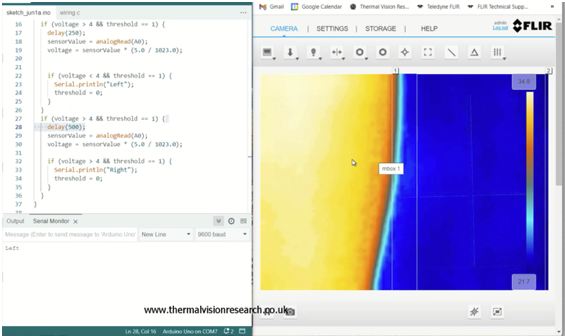 How to virtually increase the number of digital outputs on a FLIR AX8 thermal camera Application A customer using an AX8 wanted to trigger on the digital output if either...
How to virtually increase the number of digital outputs on a FLIR AX8 thermal camera Application A customer using an AX8 wanted to trigger on the digital output if either...
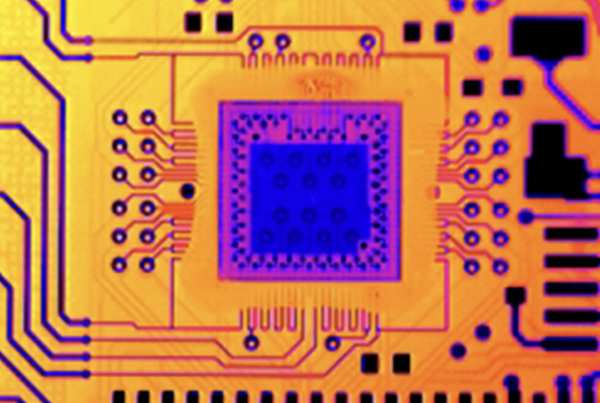 Contact vs. Non-Contact Testing As electronic circuit boards and components get smaller and more powerful, inherent heat can cause significant damage. Infrared thermography can identify hot spots, allowing for improved...
Contact vs. Non-Contact Testing As electronic circuit boards and components get smaller and more powerful, inherent heat can cause significant damage. Infrared thermography can identify hot spots, allowing for improved...
 The FLIR RS8500 high-speed camera has been selected for integration into the NEOS optical tracking system from Nurjana Technologies. Thanks to the camera’s superior resolution and measurement accuracy, the Italian...
The FLIR RS8500 high-speed camera has been selected for integration into the NEOS optical tracking system from Nurjana Technologies. Thanks to the camera’s superior resolution and measurement accuracy, the Italian...
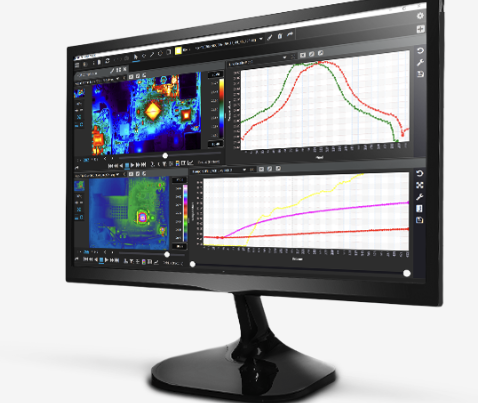 Research Studio 3.0 LAUNCHED April 2023 FLIR Research Studio is designed to work the way you do, providing robust recording and analysis capabilities with an intuitive user interface for a...
Research Studio 3.0 LAUNCHED April 2023 FLIR Research Studio is designed to work the way you do, providing robust recording and analysis capabilities with an intuitive user interface for a...
 On the right track: UK rail operator trials ‘Intelligent Train’ prototype to transform transport network Rail operator Northern is trialing a new state-of-the-art train to help radically improve infrastructure issues...
On the right track: UK rail operator trials ‘Intelligent Train’ prototype to transform transport network Rail operator Northern is trialing a new state-of-the-art train to help radically improve infrastructure issues...
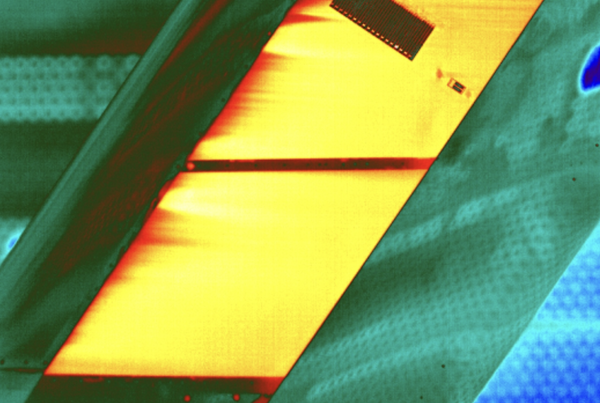 Thermal imaging at Mach 1.4 - improving aircraft performance at the Aircraft Research Association Aircraft Research Association (ARA) is a UK-based aerodynamics research institute working on innovative projects for the...
Thermal imaging at Mach 1.4 - improving aircraft performance at the Aircraft Research Association Aircraft Research Association (ARA) is a UK-based aerodynamics research institute working on innovative projects for the...
 Helping QinetiQ develop next-gen military camouflage and stealth technology QinetiQ is a British multinational defence technology company and a world-leading provider of unmanned air, land and surface targets for live-fire...
Helping QinetiQ develop next-gen military camouflage and stealth technology QinetiQ is a British multinational defence technology company and a world-leading provider of unmanned air, land and surface targets for live-fire...
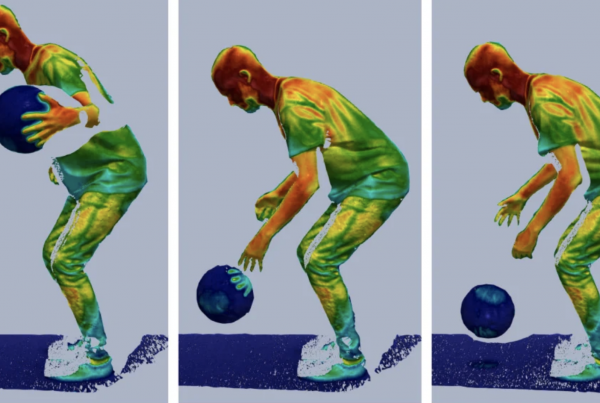 High Speed Thermography Combines Dynamic Spatial 3D and Thermal Data Researchers at the Fraunhofer IOF in Jena have developed a camera system for the three-dimensional detection of objects with two...
High Speed Thermography Combines Dynamic Spatial 3D and Thermal Data Researchers at the Fraunhofer IOF in Jena have developed a camera system for the three-dimensional detection of objects with two...
 Saving Beehives With FLIR Thermal Cameras Beekeepers are increasingly turning to thermal imaging to help them care for their bees, especially during winter. Master beekeeper Rusty Burlew, who writes and...
Saving Beehives With FLIR Thermal Cameras Beekeepers are increasingly turning to thermal imaging to help them care for their bees, especially during winter. Master beekeeper Rusty Burlew, who writes and...
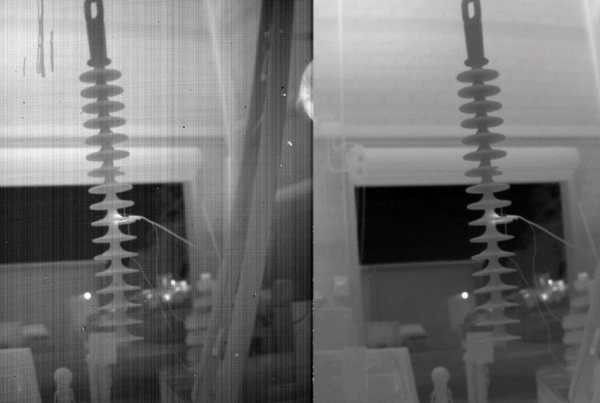 What is a Non-Uniformity Correction (NUC)? If you’re wondering why your thermal image sometimes freezes and the camera makes a clicking noise, there’s no need to be alarmed, it’s performing...
What is a Non-Uniformity Correction (NUC)? If you’re wondering why your thermal image sometimes freezes and the camera makes a clicking noise, there’s no need to be alarmed, it’s performing...
 High-Resolution FLIR Camera Brings Science to the Racing Track Engine pre-heating systems are becoming an ever more valuable asset and even a competitive advantage on today's car racing tracks. Many...
High-Resolution FLIR Camera Brings Science to the Racing Track Engine pre-heating systems are becoming an ever more valuable asset and even a competitive advantage on today's car racing tracks. Many...
 Validating Thermal Protection Before a Space-Shot Launch Neil Tewksbury and his team at the University of Southern California Rocket Propulsion Lab want to blast a rocket into space. As part...
Validating Thermal Protection Before a Space-Shot Launch Neil Tewksbury and his team at the University of Southern California Rocket Propulsion Lab want to blast a rocket into space. As part...

